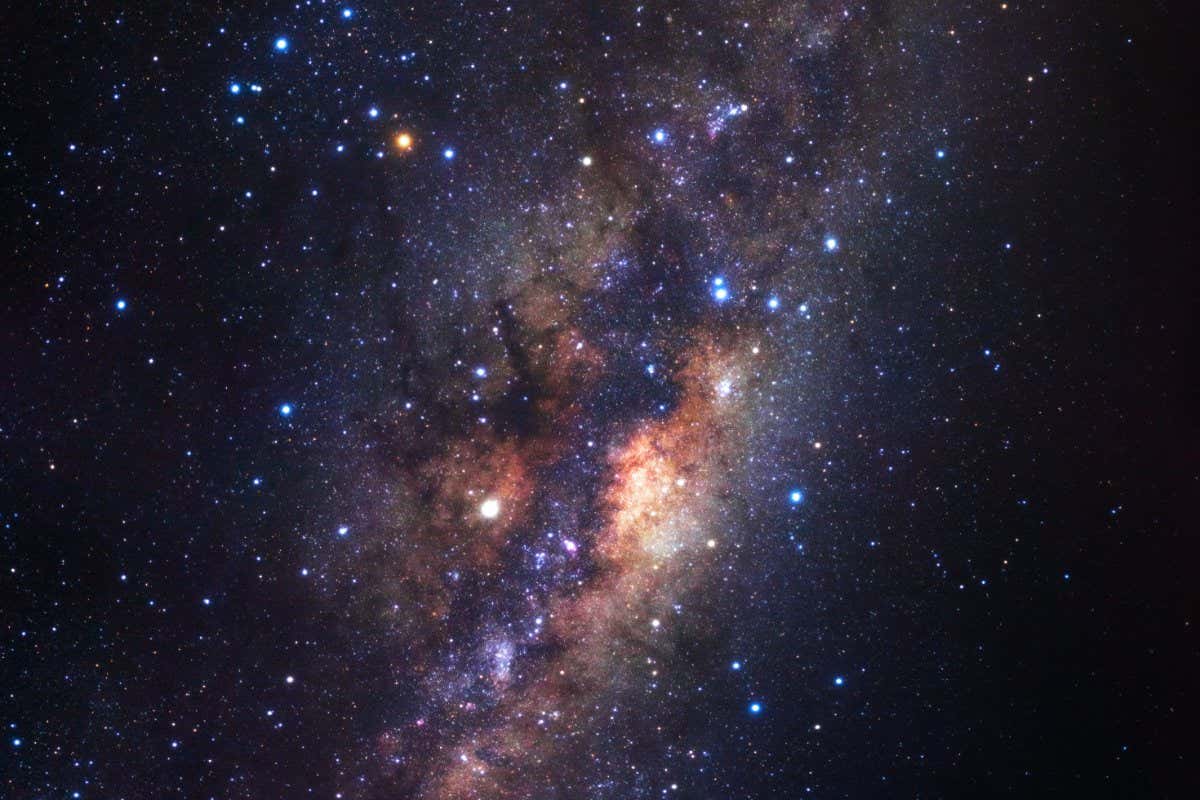The very centre of the Milky Way has an unexpectedly low density of cosmic rays compared with the rest of the galaxy, which means that they are somehow being kept out
Space 9 November 2021
By Leah Crane
The Milky Way galaxy
Shutterstock / sripfoto
Something is keeping cosmic rays out of the centre of the galaxy. The Milky Way is suffused with a sea of high-energy particles spewed out by supernovae and other energetic astrophysical objects, but that expanse of cosmic rays seems to be unexpectedly blocked out of the very middle of the galaxy.
Xiaoyuan Huang at the Chinese Academy of Sciences and his colleagues examined data from the Fermi Gamma-ray Space Telescope on the distribution of cosmic rays near our galactic centre. They found that while the cosmic ray density was fairly constant in areas outside the very centre of the galaxy, it drastically dipped in the central molecular zone (CMZ), the area closest to the Milky Way’s middle.
This means that something is keeping the sea of cosmic rays out of the CMZ. “If there is no barrier, the cosmic ray sea component should also be present in the CMZ region,” says Huang. “However, the data indicate that it is just the opposite and a barrier must be present.”
Advertisement
Most cosmic rays are charged particles, so a sufficiently strong magnetic field would be able to change their paths. “It is likely that stronger magnetic fields exist in the CMZ than outside, which may block cosmic rays from penetrating into the CMZ,” says Huang. “In addition, there may be magnetised winds, driven by the activity of the central supermassive black hole Sagittarius A*, which also help stop particles from entering the CMZ.”
This is similar to a process that occurs in our own solar system, in which relatively low-energy cosmic rays are blown away by both the magnetised solar wind and the relatively strong magnetic fields throughout the system.
It could also occur on even larger scales, which could affect any extragalactic cosmic rays trying to get into the Milky Way, the researchers say.
Journal reference: Nature Communications, DOI: 10.1038/s41467-021-26436-z
Sign up to our free Launchpad newsletter for a voyage across the galaxy and beyond, every Friday
More on these topics:
































